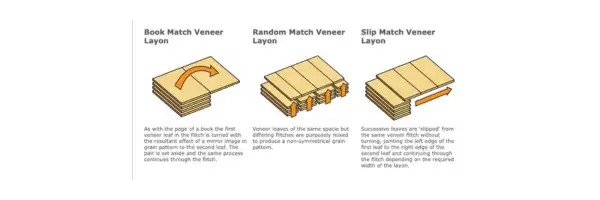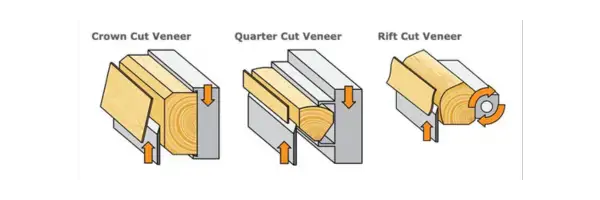- Technical Guide
- Art of Veneer
Timber Veneer Matching
Learn about the different methods of matching veneers to achieve the design you want.
Published 01 June 2015
The Forza staff preparing the veneer layons for our doors and panels have over eighty years' combined experience in the selection, cutting, matching and jointing of a wide variety of commercially available timber veneers.

Traditional skills applied by our expert craftsmen are displayed in the creation of doors and panels featuring vertical, quartered or horizontal veneers with marquetry inlays, styled grooves or applied mouldings.
Equally as important as the product we create is the advice we can offer in the selection of the veneer specie, its method of cut and how best to match the leaves.
Through the pages of our brochure and website we share our knowledge of veneer with regard to matching, manufacturing and cuts, marquetry and inlays, figure types and features.
Together, we can create with veneer, an infinite variety of styles and moods within a work or living environment that is both unique and distinguished in appearance.
Veneer Matching
The most commonly used methods of matching veneer leaves in the preparation of a door or panel layon are: book match, random match and slip match, as illustrated above.
Forza specialist matching techniques extend not only to the less utilised methods of mismatch, quarter match or centre feature but also to project specific sequential matching. Here the veneer features of the individual door or panel are continued in sequence along the corridor or around the veneered area to create a perfect visual form.
Our veneer staff will consult with you regarding project floor plans and elevations in order that product delivered to site is clearly sequentially numbered for installation.
Veneer manufacture and methods of cutting
Depending on the specie of timber and the method of cut, the resultant veneer will display a unique combination of colour, grain formation and figure.

The skill and techniques of the Forza staff in preparing layons is to utilise the full potential of the veneers to display the specie's distinctive decorative features.